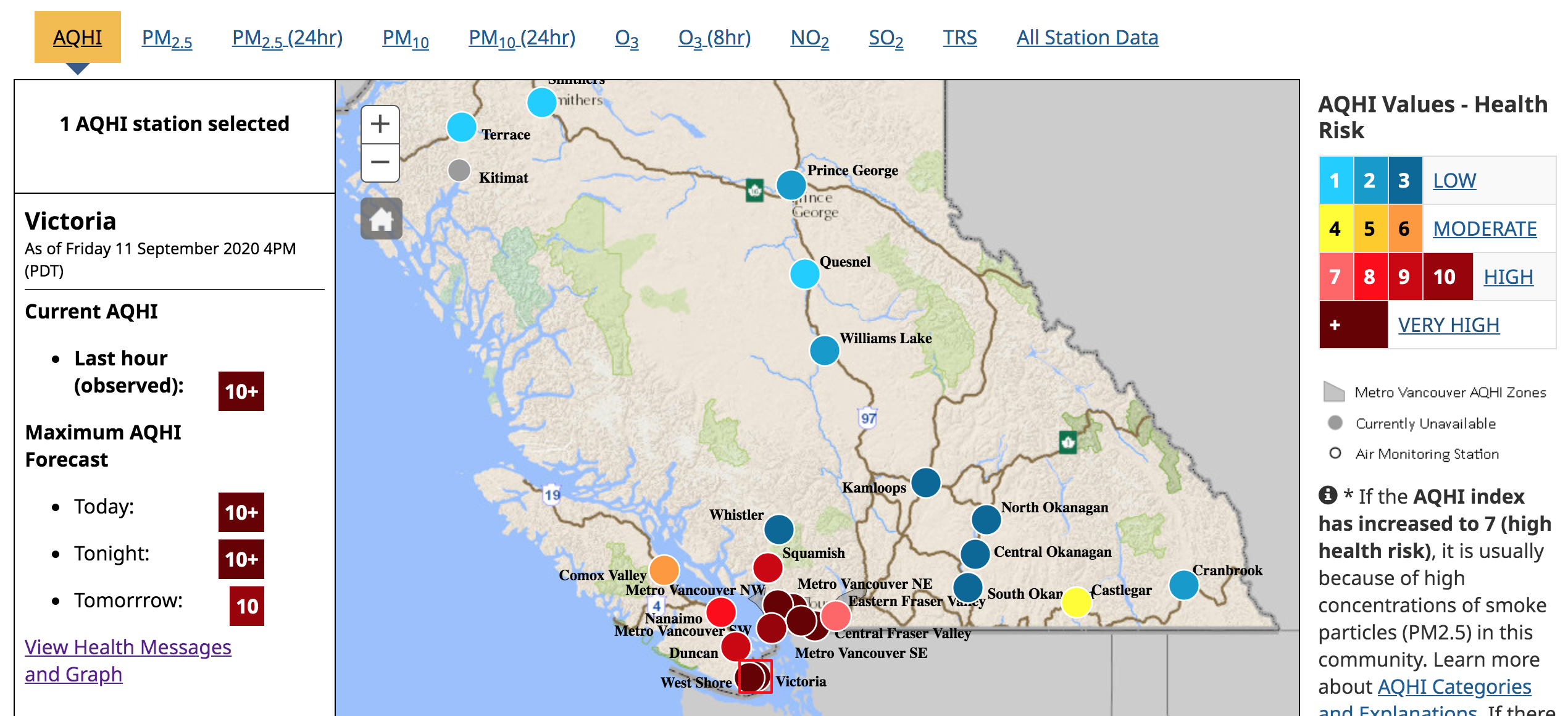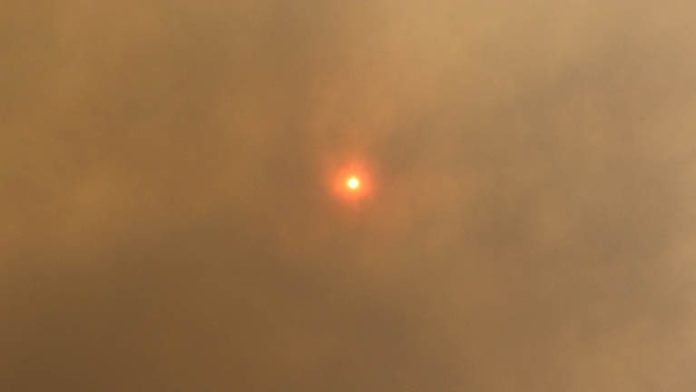Victoria is in for three straight days of the worst air quality possible, according to Environment Canada.
Throughout Friday September 11, B.C.’s capital has been shrouded in smoke causing headaches and itchy throats for many in the region.
The Air Quality Health Index for Victoria and Saanich on Friday has been at a consistent 10+ rating, which is the highest (or worst) rate possible.
But Environment Canada regional meteorologist for Vancouver Island, Armel Castellan, says these conditions could persist all through the weekend and into Monday.
“On Monday and into Tuesday, we’ll see a trough of low pressure offshore, with clouds and seasonal—and maybe even below seasonal—temperatures. Once that happens we’re going to see conditions get quite a lot better,” said Castellan in a phone interview with Victoria Buzz.
Intermittent bouts of rainfall in the southern Vancouver Island region on Monday and Tuesday is also expected to help clear up the particulate matter hanging in the air.
The Air Quality Health Index in B.C. is calculated by using an average base measure of 25 particulate matter 2.5 microns or smaller, or 25 µg/m3.
Between 3 p.m. and 4 p.m. on September 11, data collected at the Victoria Topaz station showed 145 µg/m3 in the air for that area. Such high concentrations of smoke particles result in associated health risks, and lead to AQHI risk ratings of 7-10+.
The forecast for all of Friday evening says the rating will stay at 10+, and will only drop to 10 on Saturday.

“When we get to that very high category, 10 or above, the at risk population is encouraged to avoid strenuous outdoor activities and the general population should reduce or reschedule strenuous outdoor activity,” added Castellan.
“It’s a simplified scale to allow for everybody to understand where they fit and how they can change their behaviour for a day or two or three in order to maximize their own health benefits as a result of the air quality event itself.”
At risk populations include people with existing respiratory or cardiovascular conditions, young children, seniors, and pregnant women.
Many people in the region may be experiencing itchy throats, coughs, and/or headaches due to the smoke.
Castellan adds that one factor that comes into play with smoke events is that because they are particles in suspension within the fluid dynamics of an air shed, there may be several spots in the capital region that are clearer than others at different points from Friday to Sunday.
This means the air quality index rating may not remain at 10+ for the entire three days all across the Greater Victoria area, but a large part of southern B.C.—and even as far as Calgary and Lethbridge in Alberta—can expect a shroud of smoke until weather patterns start to change next week.
The combination of wildfire smoke and a global pandemic is also not desirable.
“Coronavirus is related to the respiratory tract and this is not helping the exposure and onset of [symptoms in] folks contracting COVID-19. It’s pretty wide reaching,” adds Castellan.
The main source of the smoke is dozens of wildfires blazing along the west coast of the United States, particularly in Oregon, California, and western parts of Washington state.
However Castellan says any wildfires, big or small, including ones in B.C. contribute to smoke particles in the air.
“Air quality knows no boundaries,” he adds.
“It is really incumbent that we all change our behaviour as much as we can to mitigate the risk that it poses.”



